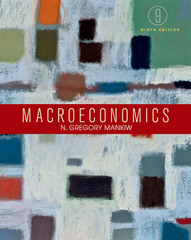Question
1. Which of these is NOT one of the traditional four market structures? a. Monopolistic competition b. Monopoly c. Social competition d. Oligopoly 2. In
1. Which of these is NOT one of the traditional four market structures?
- a. Monopolistic competition
- b. Monopoly
- c. Social competition
- d. Oligopoly
2. In the short run, in perfect competition, minimizing losses by shutting down requires that _____.
- a. P < AVC
- b. P > ATC
- c. P > MC
- d. P > AFC
3. Of the 110,000 US restaurants that closed during the pandemic, how many closed permanently?
- a. Only 10%
- b. Only 25%
- c. A bit more than 2/3
- d. Over 95%
4. During the COVID-19 pandemic, the shut-down decision was mainly a legal one, NOT an economic one.
- a. True
- b. False
5. The short-run industry supply curve in perfect competition is the sum of the supply curves of ALL individual firms.
- a. True
- b. False
6. Economists assume that the goal of perfectly competitive firms is _____.
- a. different for each firm
- b. the same as firms in other market structures: maximize profits
- c. different across industries but the same for each firm in an industry
- d. maximize profits, which is different from the assumption for other market structures
7. Economic theory of market structure assumes that only in perfect competition do firms attempt to maximize profit.
- a. True
- b. False
8. Which of these is a NOT a characteristic of perfect competition in a product market?
- a. Economies of scale are available up to a large level of output.
- b. Each firm is a price taker.
- c. All firms make a homogenous product.
- d. All firms use the same technology and have equal access to information.
9. What characteristics of the model of perfect competition contribute to firms having the same costs?
- a. Some firms have economies of scale but all firms buy the same inputs.
- b. All firms have the same historical starting point, giving none a competitive advantage.
- c. The model assumes unequal sunk costs and that contributes.
- d. The model's assumptions about technology and information are influential.
10. Firms in perfect competition are assumed to have access to the same technology and to have identical cost curves in short and long runs.
- a. True
- b. False
11. Firms in perfect competition are assumed to be price takers, with each unable to control market price.
- a. True
- b. False
12. For firms in perfect competition, who are price takers, the demand for their product is vertical.
- a. True
- b. False
13. MR (marginal revenue) is defined as the _____.
- a. extra value of inputs used in producing an extra unit of product
- b. extra cost associated with one extra unit of revenue
- c. average revenue from product sold
- d. extra revenue from an extra unit sold
14. In the short-run, a firm in perfect competition maximizes profit at an output where _____.
- a. price is the maximum possible
- b. price is below other firms' prices
- c. price = marginal cost
- d. price = average cost
15. In perfect competition, a firm's marginal revenue (MR) is equal to the equilibrium market price.
- a. True
- b. False
16. In perfect competition, the firm maximizes profit at the output level where MR = MC.
- a. True
- b. False
17. In the short-run in perfect competition, when a firm produces where MR > MC, the firm _____.
- a. should decrease output
- b. is maximizing its profit
- c. is minimizing its profit
- d. should increase output
18. For a perfectly competitive firm, if MR of an extra unit of output exceeds MC of an extra unit, the firm should lower its output.
- a. True
- b. False
19. If demand for a product made in a perfectly competitive industry increases, the model predicts that, in the short run, price and output will decrease.
- a. True
- b. False
20. If demand for a product made in a perfectly competitive industry increases, the model predicts that SR (short-run) adjustments will follow which sequence?
- a. Price down; output up in SR
- b. Price up; output up in SR
- c. Price up; output down in SR
- d. Price down; output down in SR
Step by Step Solution
There are 3 Steps involved in it
Step: 1

Get Instant Access to Expert-Tailored Solutions
See step-by-step solutions with expert insights and AI powered tools for academic success
Step: 2

Step: 3

Ace Your Homework with AI
Get the answers you need in no time with our AI-driven, step-by-step assistance
Get Started


